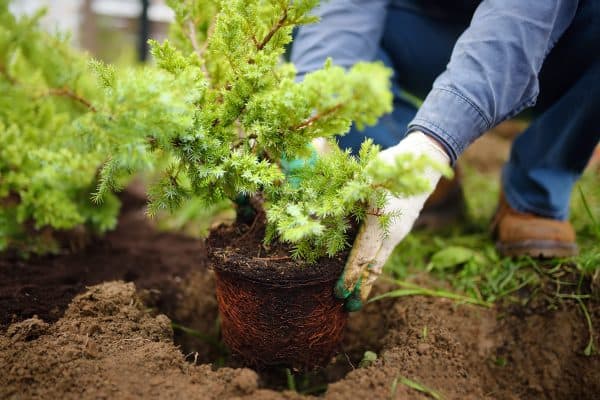Arborvitae is a popular evergreen tree, perfect for landscaping. While it's a beautiful addition to any home, its roots can be difficult to remove once they become established. Luckily, we researched this topic to reveal the proper ways of removing them.
One of the biggest challenges is getting rid of the tree's roots. But with a little bit of work and patience, you can get the job done. Here are a few tips on how to remove arborvitae roots.
- Dig up the roots and transplant them to another location.
- Cut back the roots
- Use a root grinder to grind up the roots.
- Utilize a root cutter to cut up the roots.
- Use a root burner to burn up the roots.
- Work with a shovel
In this blog post, we'll share some tips on how to remove arborvitae roots easily and without damage. Stay tuned!
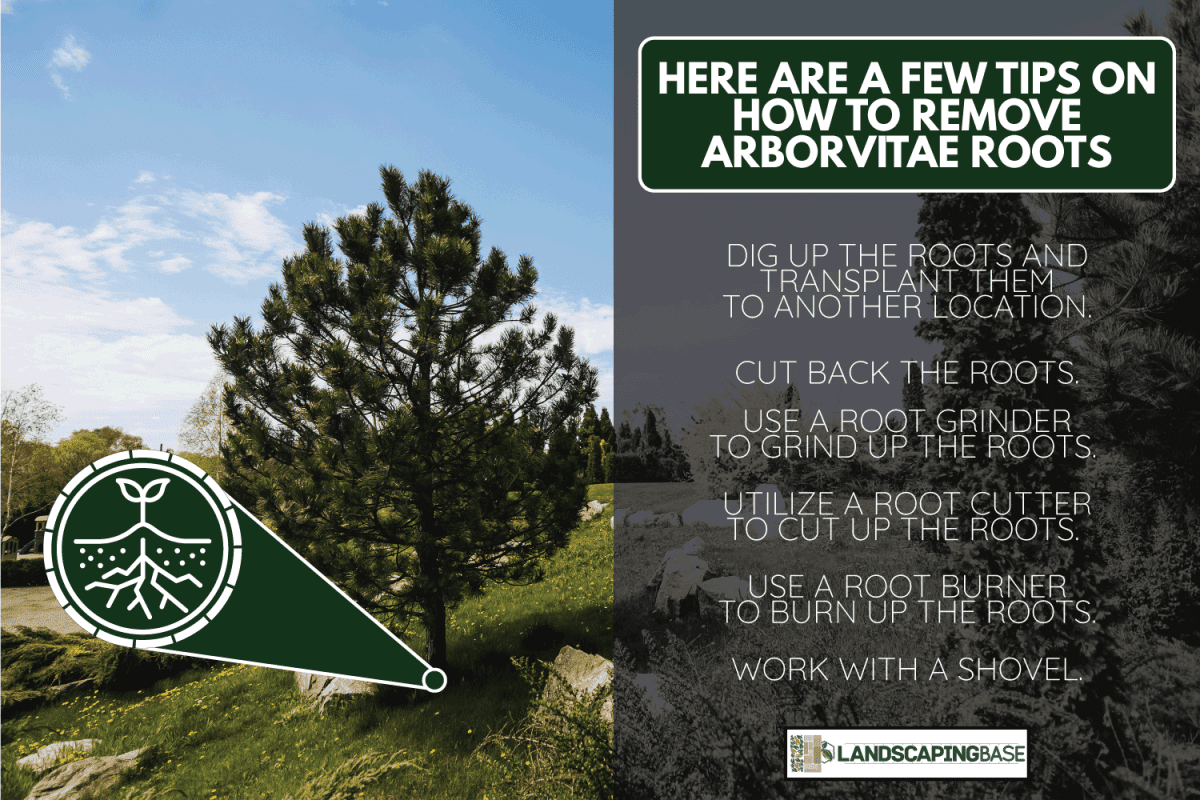
How Do the Roots Grow on an Arborvitae?
The Arborvitae, or Thuja occidentalis, is a type of evergreen tree that is commonly used as a privacy hedge or screen.
One of the reasons for its popularity is its fast growth rate; Arborvitae can add up to 24 inches of new growth per year. This rapid growth is partly due to the tree's deep root system, which allows it to access more water and nutrients than other trees.
The roots of an Arborvitae typically grow to a depth of 18-24 feet and 20 feet wide. This deep root system makes the Arborvitae tolerant of drought and able to withstand heavy winds. It also helps the tree anchor securely in the ground, preventing it from uprooting in strong storms.
Consequently, the deep roots of an Arborvitae are one of the main reasons why this tree is such a popular choice for landscaping projects.
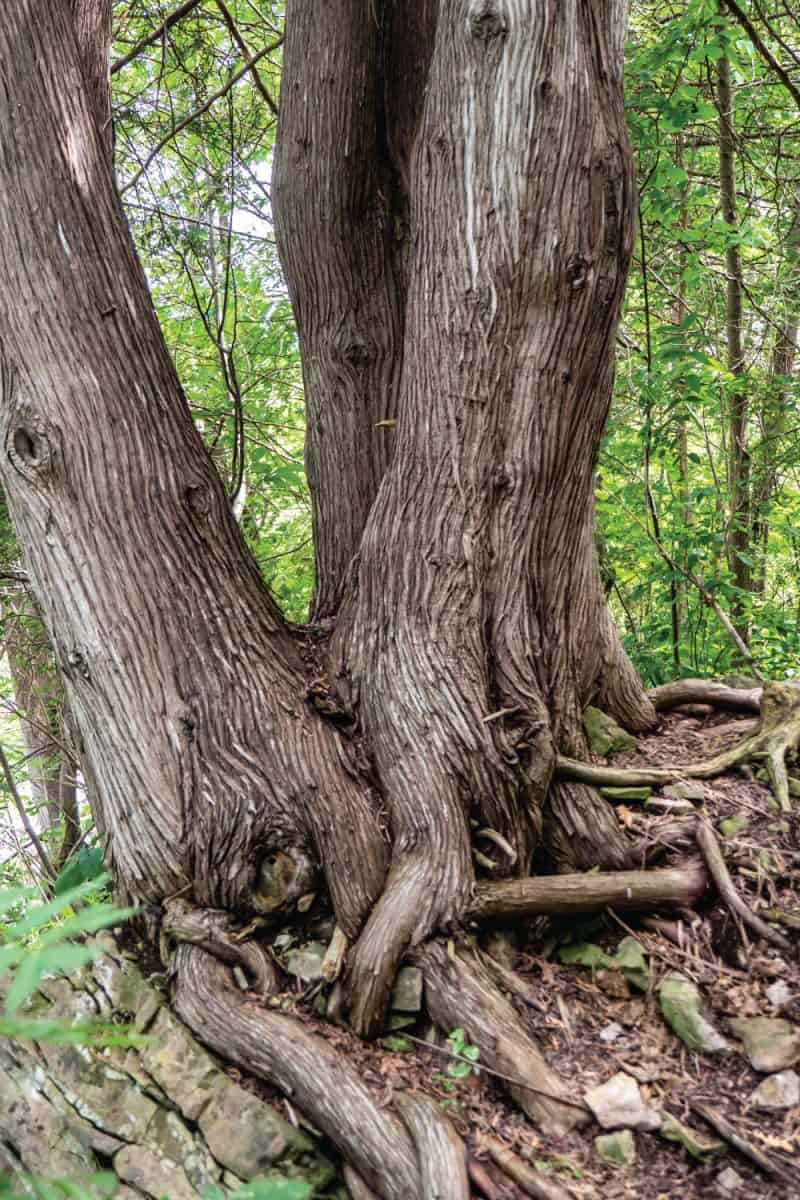
What Do You Do with Overgrown Arborvitae Roots?
When it comes to overgrown arborvitae roots, there are a few things you can do.
1. Dig up the roots and transplant them to another location.
Overgrown arborvitae roots can be a nuisance, especially if they disrupt paving or other outdoor features. However, rather than simply removing the roots, it is often possible to transplant them to another location.
Transplanting overgrown arborvitae roots is a relatively simple process, but it does require some care and attention.
First, dig up the roots, taking care not to damage them. Then, replant them in the desired location and water well. With proper care, the roots will quickly take hold and start to grow.
2. Cut back the roots.
Arborvitae roots are strong and aggressive, so if you have overgrown arborvitae, you may be wondering what you can do to get it under control.
One option is to cut back the roots. This can be done with a sharp spade, and it will help to reduce the size of the root system. However, it is important to be careful not to damage the tree.
If you are unsure of how to proceed, it is always best to consult with a professional tree service. They will have the experience and expertise to safely and effectively trim your arborvitae roots.
3. Use a root grinder to grind up the roots.
Root grinders are specialized tools that quickly and easily remove overgrown roots.
Simply position the grinder over the root, turn it on, and let it work its magic. In no time at all, you'll have a neatly trimmed lawn - without having to dig up the roots by hand.
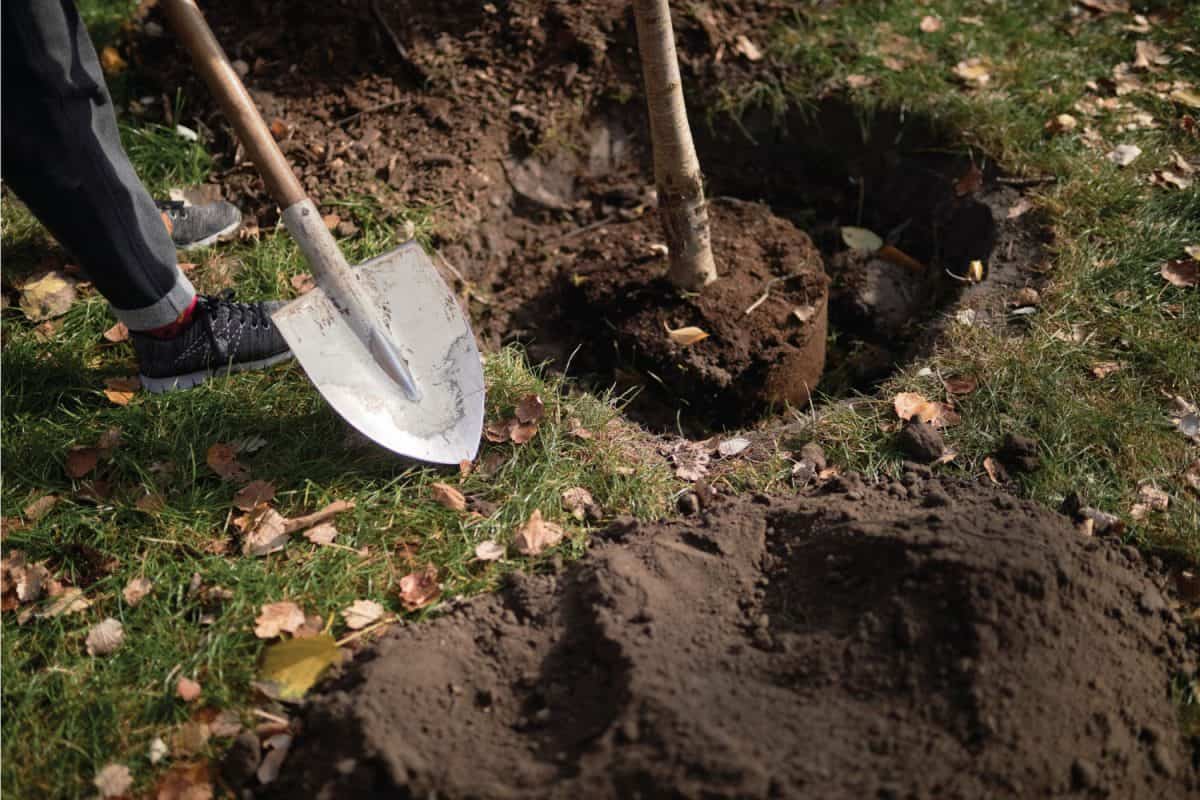
4. Utilize a root cutter to cut up the roots.
Root cutters are specially designed to cut through thick roots, making it easy to remove them from the ground.
In addition, root cutters can also be used to trim back overgrown branches, making it easier to keep your arborvitae healthy and manageable.
With a little care, you can keep your arborvitae looking great for years.
5. Use a root burner to burn up the roots.
As gardeners know, arborvitae roots are very strong and can quickly become overgrown. If left unchecked, these roots can damage sidewalks, driveways, and even the foundation of a home.
One way to control overgrown arborvitae roots is to use a root burner. This device uses heat to kill the roots, preventing them from regrowing.
6. Work with a shovel.
Another method is physically removing the roots with a shovel or other gardening tool. However, this can be a difficult and time-consuming process.
Water the surrounding area before you begin digging. This will help to loosen the soil and make it easier to dig up the roots. Start digging at the edge of the root ball and work your way down. Be careful not to damage the tree's trunk or roots.
Once the roots have been removed, they can be composted or disposed of in the trash. With a little effort, it is possible to keep arborvitae roots under control.
Benefits of Removing Roots of Arborvitae
If you have arborvitae trees on your property, you may be wondering if it is necessary to remove their roots. While the roots of these trees are not as invasive as those of some other species, they can still cause problems if left unchecked. Here are some of the benefits of removing the roots of arborvitae trees:
1. Prevents root rot
With a little care, it is possible to enjoy the beauty of arborvitae without putting your home at risk.
Arborvitae roots are susceptible to root rot, a condition that can kill the tree. Removing the roots helps to prevent this problem.
2. Improves drainage
If the roots of your arborvitae tree are clogging up your drainpipes, removing them can improve drainage and reduce the risk of flooding.
3. Reduces soil compaction
The roots of arborvitae trees can compact the soil, making it difficult for other plants to grow. Removing the roots helps to loosen the soil and make it more hospitable for other plants.
4. Minimizes damage to sidewalks and driveways
The roots of arborvitae trees can damage sidewalks and driveways. Removing the roots helps to minimize this damage.
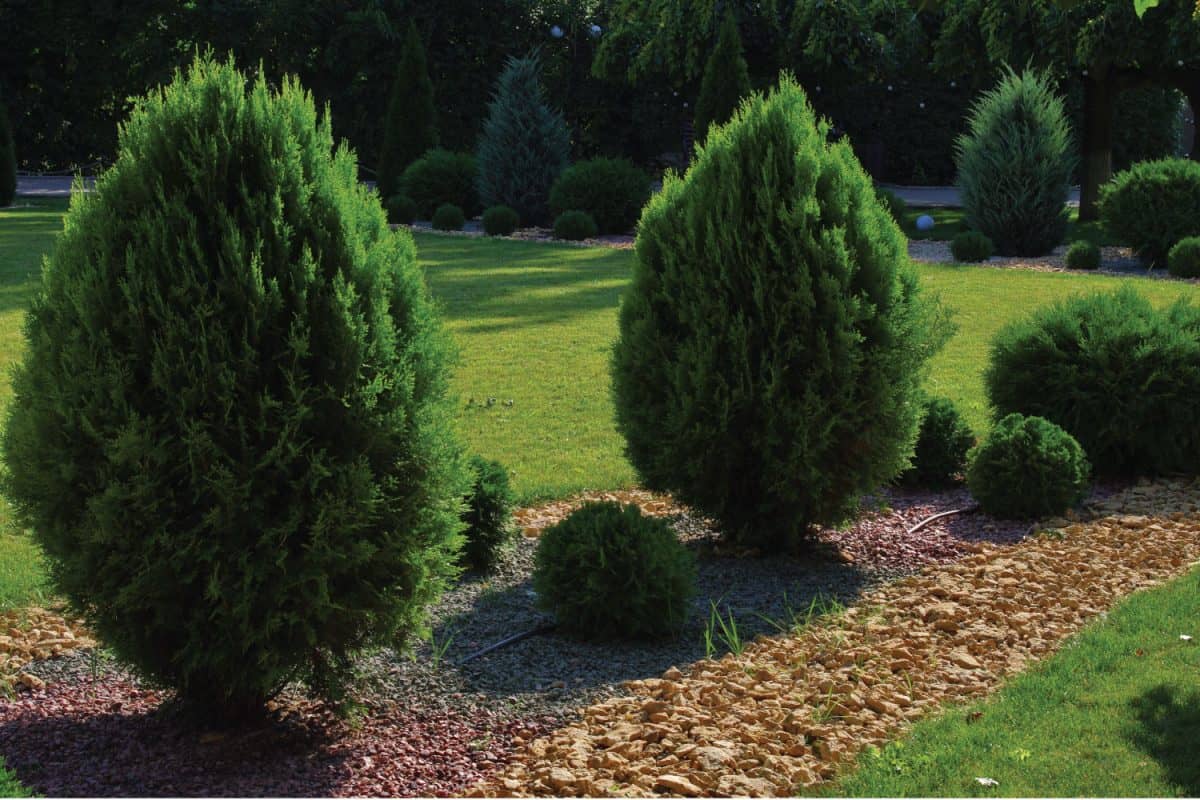
How Can You Prevent Arborvitae from Growing Too Large?
One of the perks of arborvitae is that they are hardy trees and can withstand various conditions, but this also means that they can grow very large. If you want to keep your arborvitae at a manageable size, there are a few things you can do.
First, plant them in an area with plenty of space — they can reach up to 60 feet tall! You'll also need to prune them regularly, ideally in the spring before new growth begins.
When pruning, cut back to a branch junction or bud, encouraging dense new growth.
Finally, fertilize your arborvitae annually with a slow-release fertilizer designed for evergreens. With a little care, you can keep your arborvitae looking neat for years.
While arborvitae roots can be difficult to control, there are a few steps that homeowners can take to minimize the damage they cause.
- Regularly trim the roots so that they do not have the opportunity to grow too large.
- Plant the tree in a raised bed or large container to prevent the roots from spreading too far.
- Provide the tree with adequate water and fertilizer so that it does not become stressed and produce even more aggressive roots.
Can Arborvitae Roots Damage Foundation?
Arborvitae roots are strong and fast-growing, making them a liability if they are not properly managed. If left unchecked, they can quickly wrap around and damage foundation walls, pipes, and other underground structures.
In addition, the roots can lift sidewalks and driveways, creating trip hazards for pedestrians and vehicles.
Are There Any Dangers Associated with Removing Arborvitae Roots?
Any time you alter the root system of a plant, there is potential for problems. Roots serve many purposes, including anchoring the plant and absorbing water and nutrients.
So, when you remove arborvitae roots, it can cause the tree to become unstable and may lead to decreased growth or even death.
In addition, removing roots can damage underground utility lines and pavements. If you must remove arborvitae roots, consult with a professional who can properly assess the risks and take appropriate precautions.
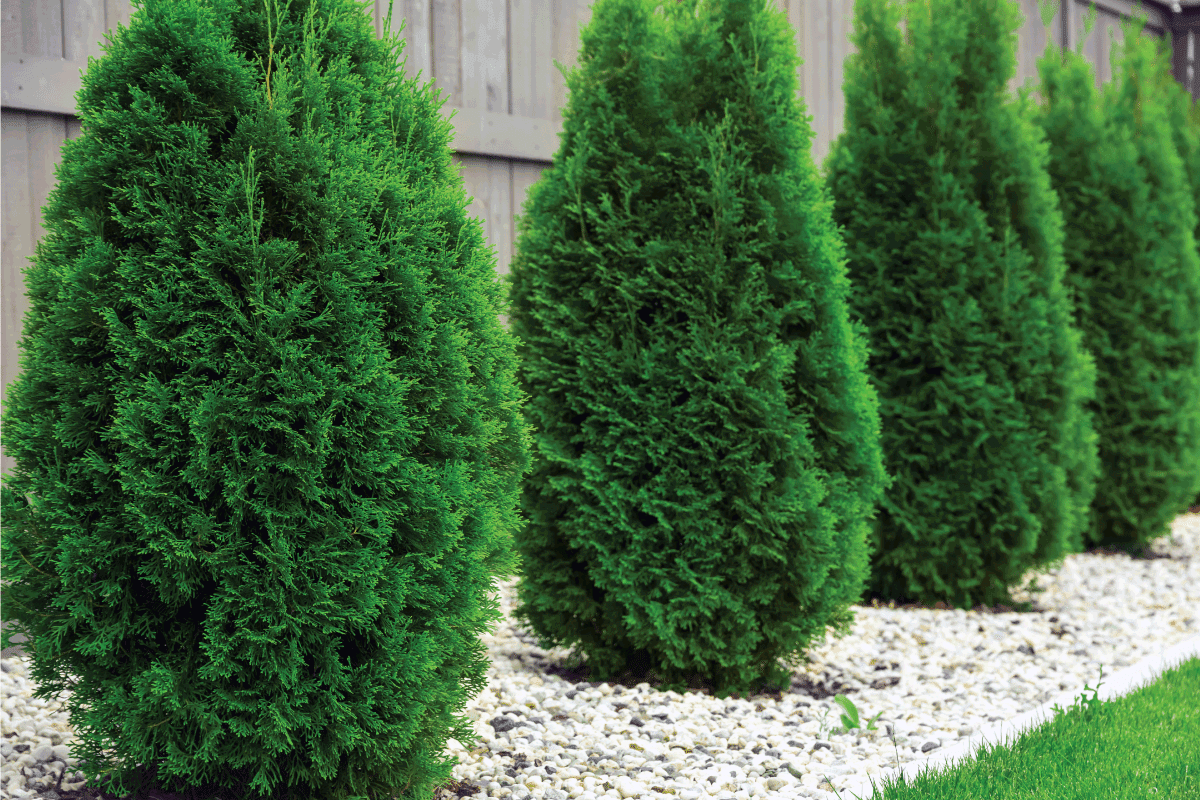
Conclusion
If you're looking to remove arborvitae roots, there are a few methods you can try. Each method has its benefits and drawbacks, so consider your options before deciding which approach is best for your situation. Ultimately, the goal is to completely remove the root system without damaging the tree or causing other problems.
To get more ideas on how to improve your landscape, follow along with our posts below:
North Facing Front Yard Landscape Ideas [15 Gorgeous Options]





![man replanting herb with yellow flowers for use in landscaping. 15 Perennials That Absorb Water [Incredible Choices For Foundation Landscaping]](https://landscapingbase.com/wp-content/uploads/2022/09/man-replanting-herb-with-yellow-flowers.-15-Perennials-That-Absorb-Water-600x400.png)
![Big custom made luxury house with nicely trimmed and landscaped front yard, South Facing Front Yard Landscaping Ideas [17 Ideas To Increase Your Curb Appeal]](https://landscapingbase.com/wp-content/uploads/2022/09/BIGCUS1-600x400.jpg)
